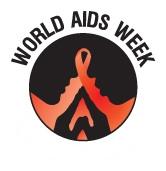Why are we talking about sports nutrition? Well, the Summer 2012 Olympics in London just finished yesterday, and many have likely been inspired to get into tip top shape!
Sports nutrition is definitely a complex topic -will just cover eating for just endurance athletes this week (and eating for strength athletes will be discussed next week).
What type of diet should an endurance athlete be following?
According to RD411 (a reputable nutrition web resource), the main goal is to keep up your body’s source of fuel through what you eat before, during, and after exercise.
Carbohydrate:
Carbohydrate intake is crucial all the time! Before, during and after long exercise bouts in order to load up, preserve and replace glycogen, carbs are needed in your diet. Foods high in carbohydrate should provide the majority – 55 to 60% – of total calories, or 6 to 10 grams of carbohydrate per kilogram of body weight. To little carbohydrate intake, and a phenomenom called “hitting the wall” may occur. This is when your muscle glycogen stores are depleted, and usually occurs after 32km (of a marathon, for example).
Emphasize complex carbohydrates. These are whole grains, breads, cereals, beans, pasta, potatoes and other starchy vegetables. *Note* to retain a diet high in fibre, keep the peels on vegetables, and choose grain products with 5g of fibre or more per serving!
Simple sugars – fruits, juices, sugar, syrups, and honey – provide “quick energy.” Many are too concentrated to be consumed during exercise -but are a good way to begin replacing glycogen stores immediately after exercise.
Protein:
Protein is needed to:
- repair exercise-induced muscle damage
- provide a small amount of energy during exercise (with adequate carbohydrate intake)
- support gains in lean tissue mass (not as common for endurance athletes)
Endurance athletes should eat 12-15% of total calories from protein, or about 1.2 to 1.5 grams of protein per kilogram of body weight. More protein than this amount has not been scientifically proven to make significant improvements in endurance athletic performances! T
Interestingly, the typical diets of most athletes provide more than enough protein to cover the increased amounts that they may need, however it is important to spread your protein intake out over many small meals during the day. Good protein sources include lean meats, poultry and fish; nonfat or low fat dairy products; eggs, grain/legume/dairy combinations.
Fat:
Provides:
- energy
- essential elements of cell membranes
- fat-soluble nutrients such as vitamins A, D and E
Athletes should consume 20-30% of total calories as fat… too high or too low can have negative effects on blood lipid profiles (high LDL cholesterol levels, or “bad” cholesterol, for example).
So what should your hydration plan look like?
During exercise, water is all you need for events lasting less than 1 hour, but beverages containing carbohydrate and sodium are recommended during exercise lasting longer than 1 hour. This is where sports drinks can play a role many of which contain 7% carbohydrate – the optimal concentration!
Here are some great hydration guidelines from RD411:
| 2 hours before event | 2 cups cold fluid |
| 15 minutes before event | 2 cups cold fluid |
| During event, every 15-20 minutes | 4-6 oz. cold fluid (1/2-3/4 cup) |
| After event | 2 cups fluid for every pound lost |
Take home message for eating for endurance athletes:
Combine whole grains, protein-rich foods and vegetables and/or fruit at each meal and snack to help prevent large fluctuations in blood glucose, control appetite and eat a balanced diet including enough fluid to stay hydrated and energized! Also, don’t try anything new on race days, and keep pre-race meals and snacks low in fat and not overly high in fibre in order to prevent any potential stomach upset!
Until next time! Click here to listen to the podcast!
Image source: chumpysclipart.com



